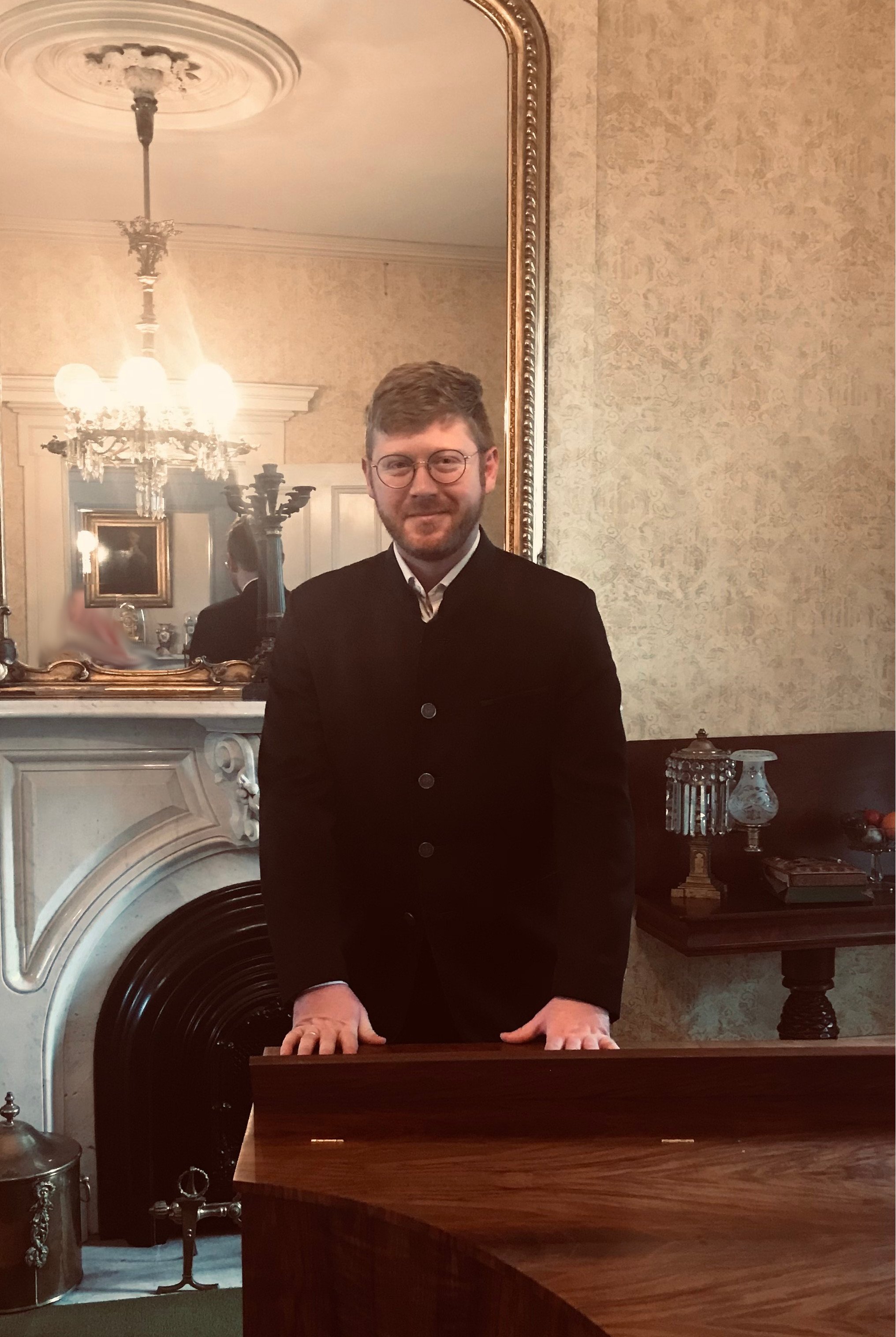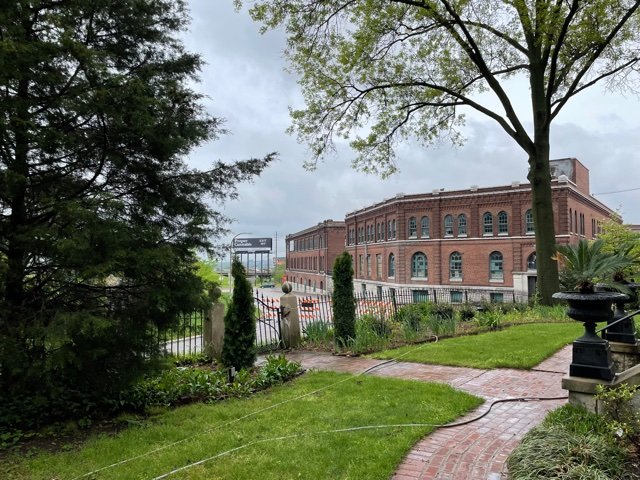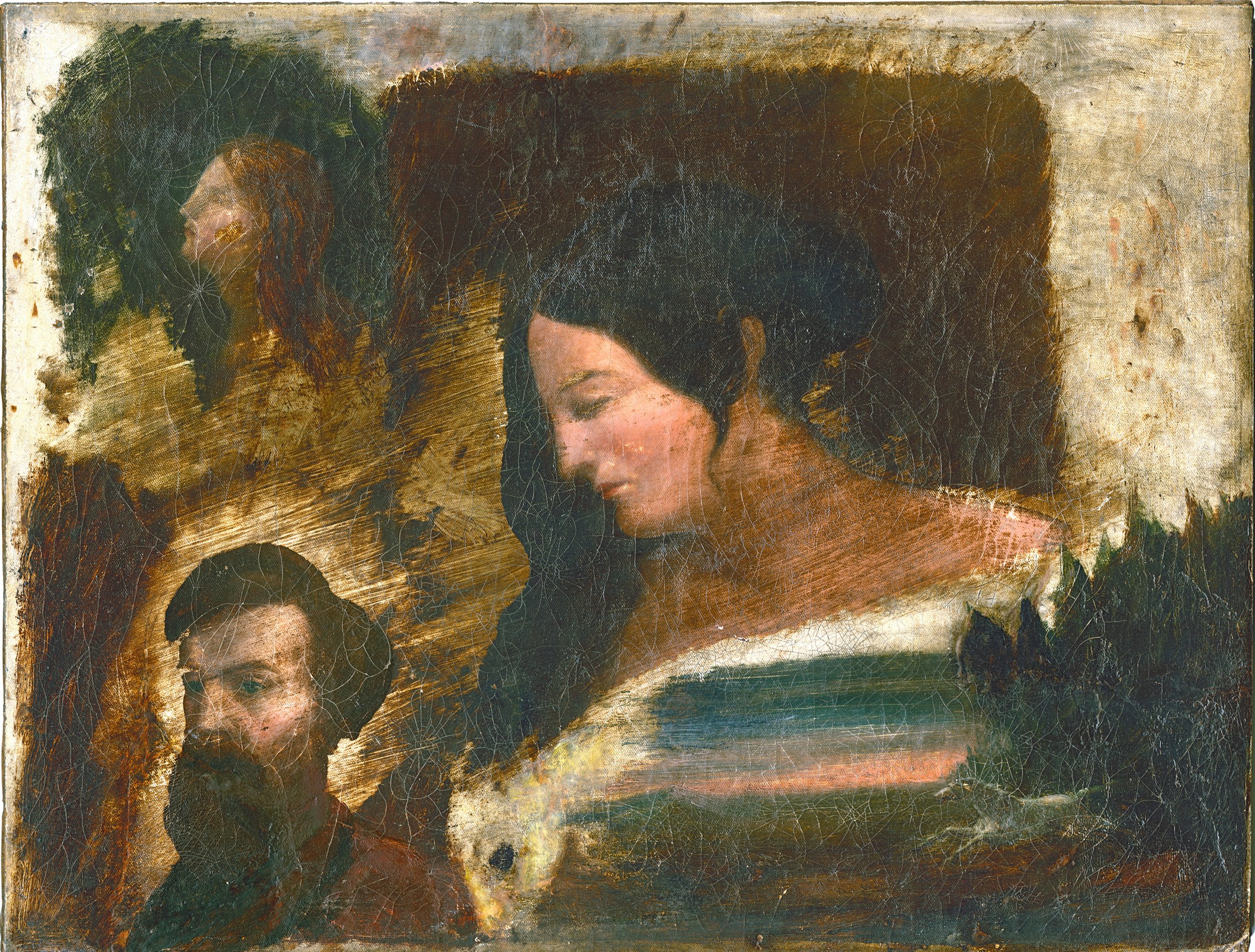Dr. DeMenil's Balcony Restoration
Southern elevation
A labor of love and attention to detail, restoring Dr. DeMenil's mahogany and cast-iron balcony was a rewarding project undertaken by our old friend and master carpenter, Alex Mattan, a project generously supported by Mesdames Gleason and Love. Mahogany, known for its durability and rich color, and cast iron, a strong and versatile material, made for a stunning combination when constructed in 1863.
Alex examined the condition of the mahogany boards and cast-iron supports, looking for signs of rot, decay, rust, or structural damage. The mahogany was past saving, but the supports and railing were in good shape.
With his team, he first removed the mahogany boards and cross beams. They then cleaned old paint and rust from the cast iron supports and balcony railing. Once the supports (white) and railing (black) had been painted, the boards were replaced with new sapele mahogany planks and beams. Sapele (Entandrophragma cylindricum) from the West African coast is a modern substitute for environmentally threatened and hard to source mahogany.
A highquality UV proof clear acrylic wood finish protects the natural beauty of the sapele. The final step in the balcony restoration was the repair and repainting of the Jeffersonian window leading out to the balcony.
With two sashes above and double opening panels below, a Jeffersonian window, allowing egress to a porch, was supposedly conceived of (while in France) by Thomas Jefferson to avoid a tax levied on doors. DeMenil has four Jeffersonian windows on the second floor leading to the front and rear porches and Dr. DeMenil's balcony.
The south façade balcony in all its ornate glory
Joe A. Meilsel's 1904 World's Fair Collection
HoldToLight Postcard of (now) WUSTL's Brookings Hall
Though the 1904 St. Louis world's fair took place years before the birth of Joe Meisel, Jr., in 1913, he became one of its biggest fans.
Joe's roots were buried deep in the city. A fourth generation Saint Louisan, he grew up here, graduating in 1930 from the first class of University City High school at its present location. He attended Washington University, earning a business degree in 1934. His grandfather, John Meisel, was cofounder of the Herket and Meisel Trunk Co., a downtown institution for nearly a century. It was best known for theatrical trunks, which were used by many entertainers, including Fred Astaire and Bob Hope, who, in his autobiography, commented, "Having an H & M Trunk was like having sterling engraved on your bottom if you were a teapot." Joe ran the family business for many years before selling it when he retired.
Thanks to its donation by his daughter, Pat McBride, Joe's collection can now be enjoyed by all who come to the ChatillonDeMenil House's third floor exhibit.
The Saint Louis World’s Fair officially opened on April 30, 1904. Over the course of the next eight months 19,694,855 people visited the fairgrounds which were in presentday Forest Park and the campus of Washington University.
This collection is especially important to our history because our very own Alexander DeMenil served on the Board of Directors of the Louisiana Purchase Exposition as the Director of the French Exhibit and translator to the French dignitaries who visited St. Louis in preparation for the Fair. The Meisel Collection holds over 1200 pieces of memorabilia ranging from the most common souvenirs one could purchase at the fair, such as HTL postcards, to the extraordinary Festival Hall clock by Mermod & Jaccard seen below.
A creation by St. Louis' premier jeweler
Trompe L'oeil (faux painting) Throughout the House
The summer of 2023 was time to renew the sun faded mahogany front doors of the DeMenil House, but a program of scraping, staining, and varnishing was interrupted by the discovery that the beautiful twin doors were actually built of pine, faux painted to look like mahogany. It turned out that all of the mahogany doors were, in fact, faux painted first growth pine.
Pine Door Painted to Look Like Mahogany
While the term "faux painting" might not have been used in the 1860s, decorative painting techniques were prevalent. These techniques included: Graining, or imitating the look of wood, often used on doors and moldings; Stenciling, using patterns and designs to create decorative effects.
These techniques were often used to elevate the appearance of a room, especially in more affluent homes. They could also be used to mimic more exotic materials such as mahogany. Skilled artisans and painters were available in larger cities to create these intricate designs.
Alex DeMenil's Library's Faux Crown Molding and Ceiling Decoration
Even though the Civil War was on the horizon, there was a desire for homes to reflect America's prosperity, especially west of the Mississippi River. Decorative painting was a way to achieve a luxurious look without the expense of materials that would have had to have been imported through the Confederate States.
Why Faux Mahogany? Costeffectiveness: pine was significantly cheaper than mahogany; aesthetic appeal: mahogany was considered a highend wood, and its rich color and grain were highly desirable. While the specific techniques used in the 19th century might differ slightly from modern methods, the general principles remain the same. Base coat: a dark brown or reddishbrown paint would be applied as a base to mimic the mahogany color; graining: artisans would use tools or brushes to create the illusion of wood grain, replicating the characteristic patterns of mahogany; glazing: a translucent glaze could be applied to add depth and richness to the finish.
Greek Revival Architecture
The Greek Revival style was at its peak in the United States during the antebellum period, which encompasses the time leading up to the Civil War. This architectural movement was characterized by its simplicity, symmetry, and emphasis on classical Greek forms.
Designed and constructed by British born Henry Pitcher from 1861 to 1863, the DeMenil embellishments to Henry and Odile Chatillon's creole style 1851 brick farmhouse echoed the 1830 Greek Revival house of Henry Chouteau, Sophie DeMenil's cousin, which was torn down at the start of the Civil War. Some physical elements of the Chouteau house are said to been incorporated in the mansion that now crowns DeMenil Place.
Chouteau House (circa 1830 1860)
Key features of Greek Revival architecture include templelike facades, often featuring a portico with columns supporting a pediment; symmetrical design, with balanced proportions and layout; classical details such as moldings, cornices, and other decorative elements inspired by Greek architecture. All of these features now make the ChatillonDeMenil an architectural showplace.
Greek Revival interiors were characterized by a sense of grandeur and classical elegance. More complex than their Creole counterparts, they exuded a refined and sophisticated atmosphere. The transition between the Chatillon and DeMenil rooms of the house attest to this historically significant contrast and St. Louis's growing sophistication.
Just like the exterior, interior layouts often adhered to a symmetrical arrangement. Tall ceilings created a sense of spaciousness and grandeur; large windows allowed ample natural light; fireplaces often featured marble mantles and castiron inserts with intricate details; moldings and trim had simple, clean lines with classical motifs.
The DeMenil House, while essentially Greek Revival in style, features some elements of Regency style (18111820) in its furnishings such as curved sofa backs with lyreshaped motifs and gilded accents on decorative objects such as the grand Chouteau mirrors in the Double Parlor.
Greek Revival interiors favored a muted color palette. Neutral tones like white, cream, and light gray were often used for walls. A notable exception is the window and door trim in the renovated Chatillon part of the house which was faux painted to imitate oak, making the small parlor and dining room rise to the occasion of the grand Greek Revival
A New Book on Vandeventer Place in St. Louis
Vandeventer Place was a storied private street of massive mansions in post Civil War Saint Louis, stretching two long blocks from Grand Avenue westward to Vandeventer Avenue.
Begun in the early 1870s, platted by surveyor, Julius Pitzman, it quickly became the Place to Live. Even today, although all 50 homes have been removed, the name Vandeventer Place conjures up a mix of mystery and nostalgia among longtime St. Louisans.
Thomas C. Grady, a long time member of the Board of Directors here at the Foundation has, along with Michael Boyd, researched and authored a visually stunning illustrated history of Vandeventer Place, published through the St. Louis Mercantile Library at the University of MissouriSt. Louis. https:// www.umsl.edu/mercantile/eventsandexhibitions/VandeventerPlace_orderform.pdf
This book fills a missing spot among the works devoted to such enclaves and offers deep background on each house, the owners, architects, and even the live in staffers in 1900. It offers a view of the wealth and people who built the City at the turn of the 19th Century and set the model for the Central West End's collection of residential parkway and gated streets.
The sociology of the inhabitants of Vandeventer Place is presented not as gossip but as a study of how wealth was gained and held in the time just after the Civil War. The book also includes the 1900 Census record of the people who staffed the homes and their ethnologies for historians and the curious.


































